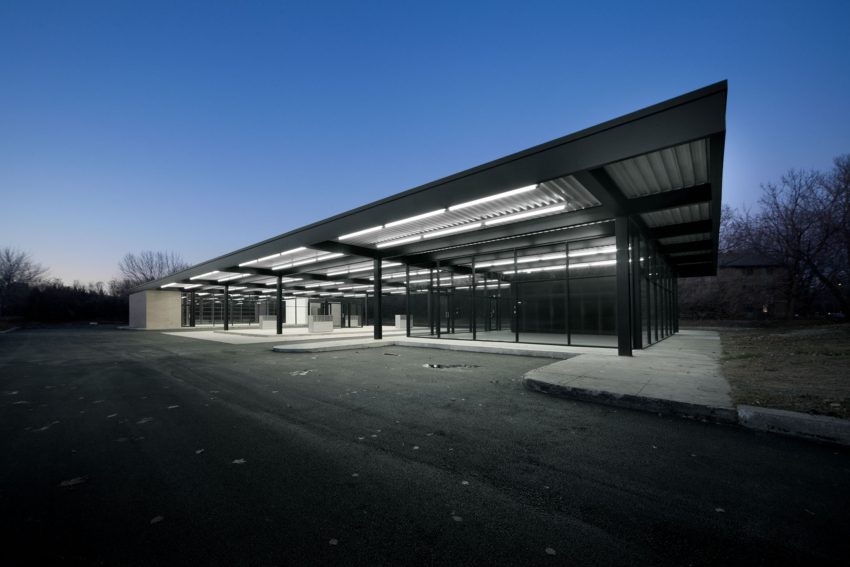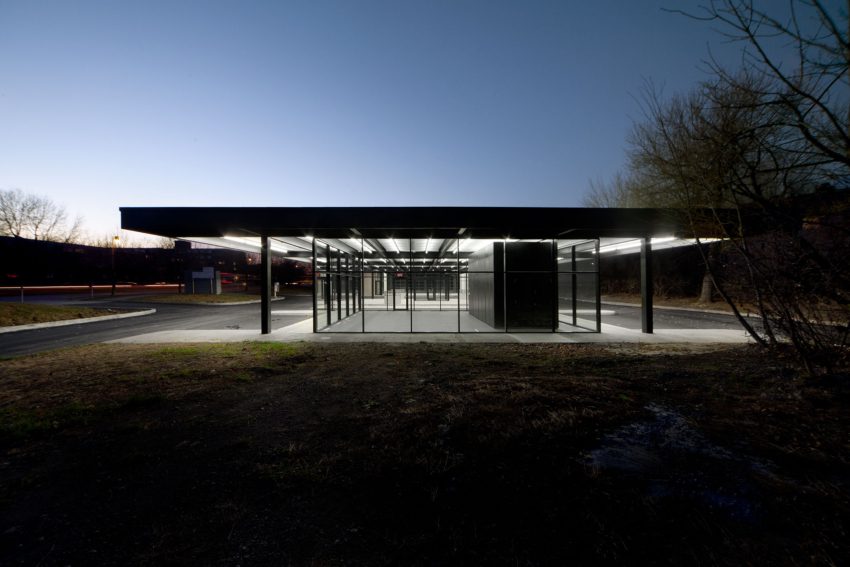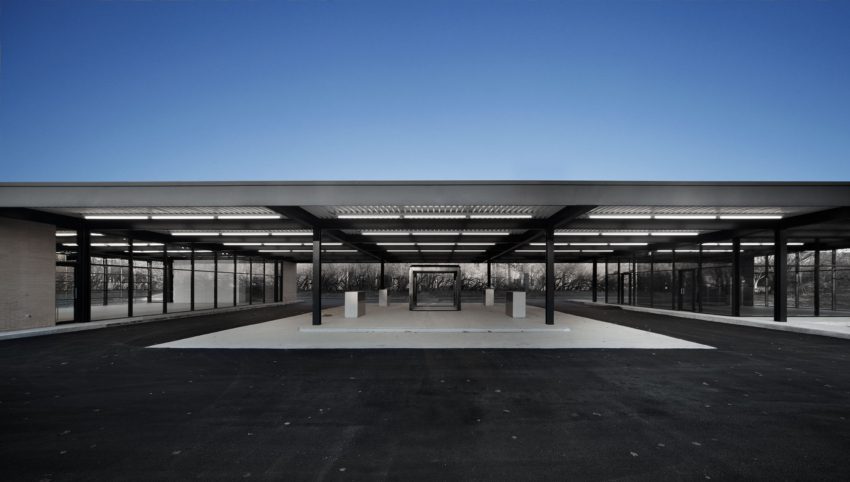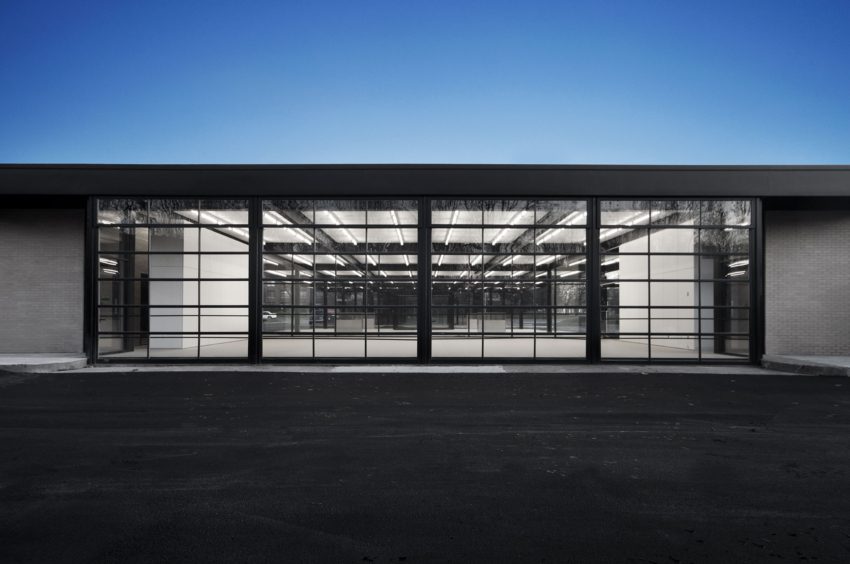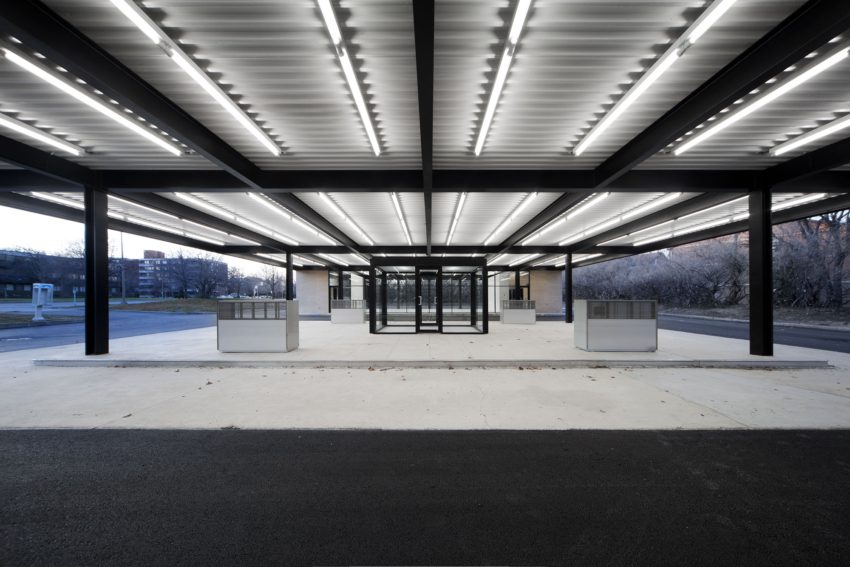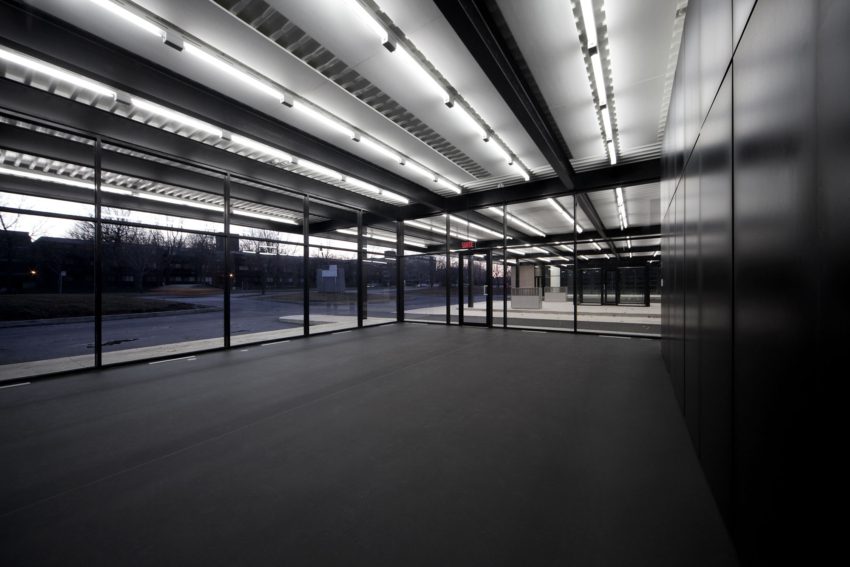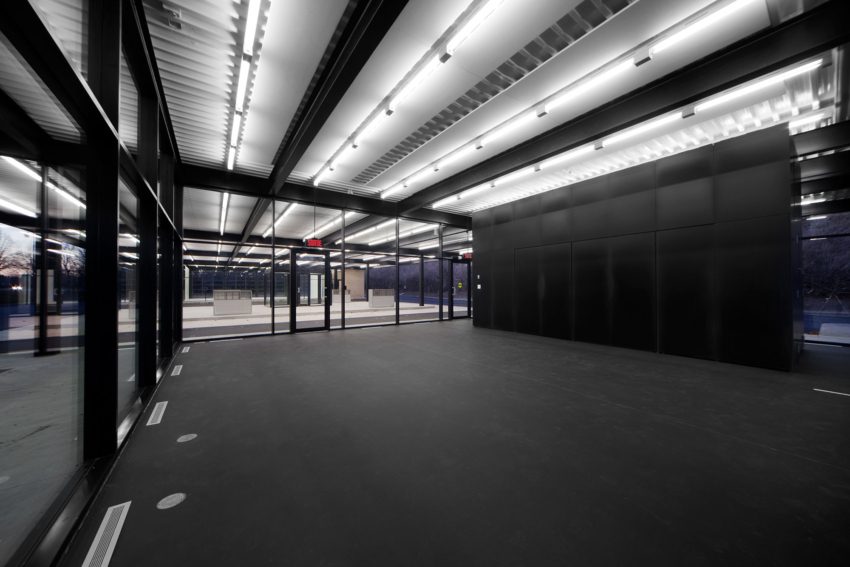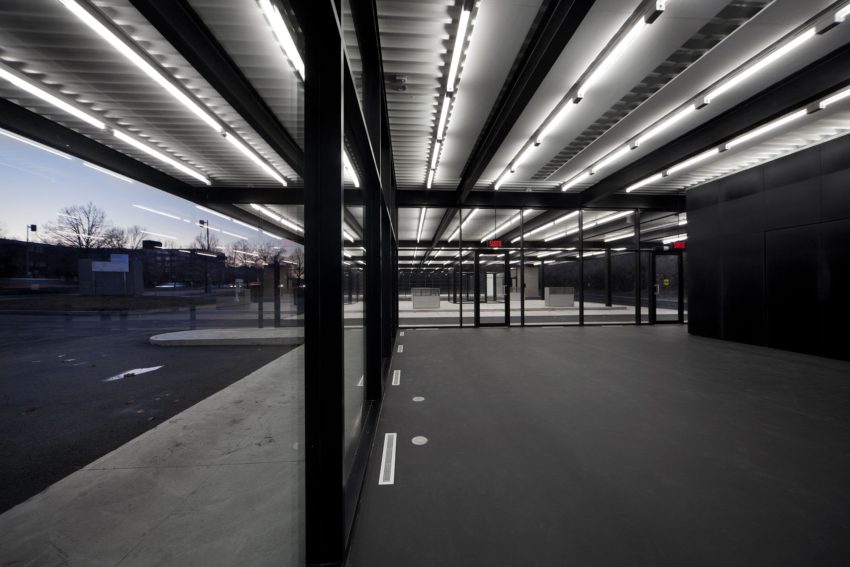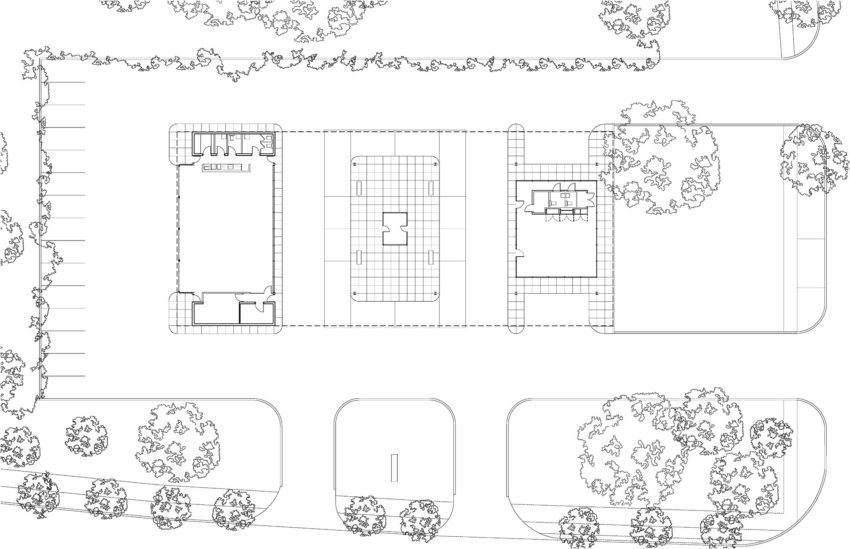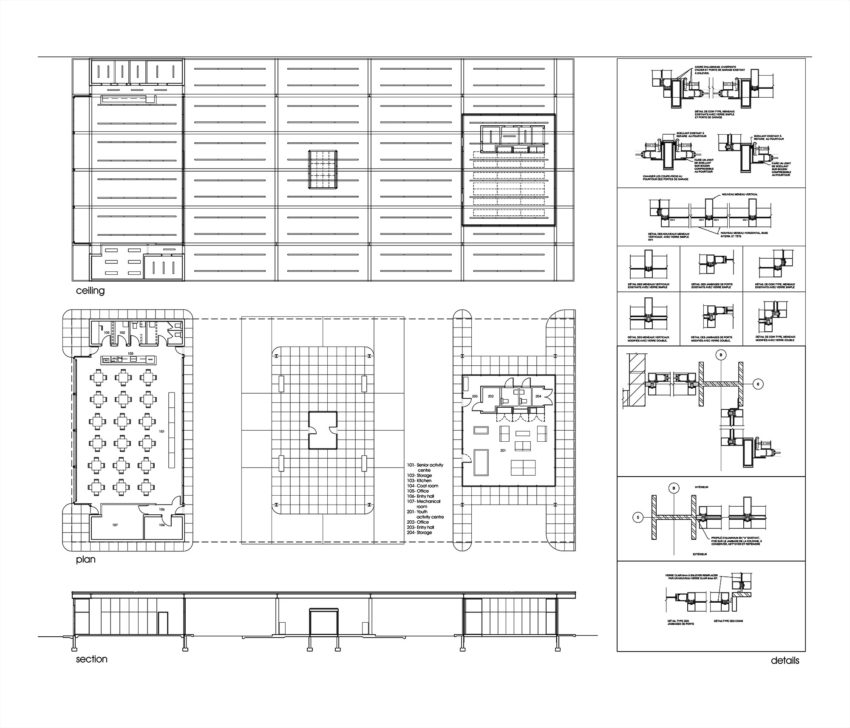In 2011 Canadian architecture firm FABG completed the renovation of the Nun’s Island Gas Station in Quebec, initially designed by Mies van der Rohe, into a civic center for the youth and senior members. As the architect states, the project “is an interpretation trying to touch and communicate the essence of an artistic vision formulated by someone else in response to a world that is no longer the same.”
Mies van der Rohe Gas Station Renovation Technical Information
- Architects1: Mies Van Der Rohe / FABG (Renovation)
- Location: 201 rue Berlioz, Verdun, Québec, Canada
- Topics: Modernism, Gas Stations, Mies, Total Black
- Renovation Budget: 1.4 M $
- Builder: Norgéreq
- Area: 500 m2
- Original Project: 1967-1968
- Renovation Project Year: 2011
- Photographs: © Steve Montpetit
Mies had an idea of beauty which was linked to the classical tradition, and values that are deeply rooted in our culture. Some thought he was only a technician, which he was not at all. He was an idealistic person who tried to communicate an idea of beauty.
– Éric Gauthier1
Mies van der Rohe Gas Station Renovation Photographs
Text by the Architects2
Nun’s Island is part of the Hochelaga archipelago located immediately southwest of Montreal. It’s urbanization followed the opening of the Champlain bridge in 1962 under an ambitious master plan carried out by Metropolitan Structures, a real estate giant who had built numerous projects in Chicago with the collaboration of Mies van der Rohe. The new community included three high-rise apartment buildings by Mies office, and it led, in 1966, to a commission from Standard Oil to design a prototypical gas station.
The station consists of two distinct volumes, one for car servicing and the other for sales, with a central pump island covered by a low steel roof that unifies the composition. The beams and columns were made of welded steel plates painted black that contrast with the white enameled steel deck and bare fluorescent tubes.
Over the years, the interiors have been modified to incorporate a car wash on the sales side, the finishes, built-in furniture, and equipment have been replaced, and the custom-made pumps removed. It ceased to be commercially operated in 2008, and the city of Montreal listed it as a heritage building in 2009 before initiating the project of youth and senior activity center. This simple program requires an open space for each group to congregate and participate in communal activities.
The senior group occupies the larger volume to benefit its sixty members who play bridge, prepare communal meals, dance, or invite lecturers. Stacking chairs and tables allow multiple configurations of the room.
The younger group occupies a smaller volume. Teenagers meet there daily to play games, listen to music, and organize parties and events under educators’ supervision.
The first architectural task was to meticulously restore the building’s envelope by dismantling and repairing the corroded curtain wall, repointing the brickwork, and repainting the structure.
The second architectural task was to develop strategies for the new mechanical and electrical needs that would not affect the heritage values’ integrity. We choose to implement solutions originating from the sustainable development field of research to achieve this goal. The new geothermal wells under the asphalt around the building provide the major part of the energy required to operate the facility, but they also radically diminish the size of the equipment and eliminate the need for a cooling tower on the roof of the building. The new stainless steel gas pumps are, in fact, air intake and outtake devices that are linked by underground ducts to the HVAC system. They replace the louvers that we would have had to install on the building, and this solution contributes to the pre-cooling or heating of the fresh air that admitted the Canadian well effect.
The third task was to radicalize the building with the new interventions to emphasize its inherent qualities and the essential values that it embodies. Formal unity and simplicity are enhanced by making everything black (teenagers’ side) or white (elders’ side). The roof’s strength as a unifying device is reinforced by using the same rhythm of linear fluorescent lighting in the interior spaces (T-5 tubes on dimmers). Transparency is augmented by opening the view entirely from one end to the other on the long axis and using low-iron glass. Specific uses and functions have been integrated into built-in freestanding units that are formally mute to dissimulate daily life contingencies.
The project is not about the faithful restoration of a monument. It is an interpretation trying to touch and communicate the essence of an artistic vision formulated by someone else in response to a world that is no longer the same. Musicians do this every day.
Mies van der Rohe Gas Station Renovation Plans
Mies van der Rohe Gas Station Renovation Image Gallery
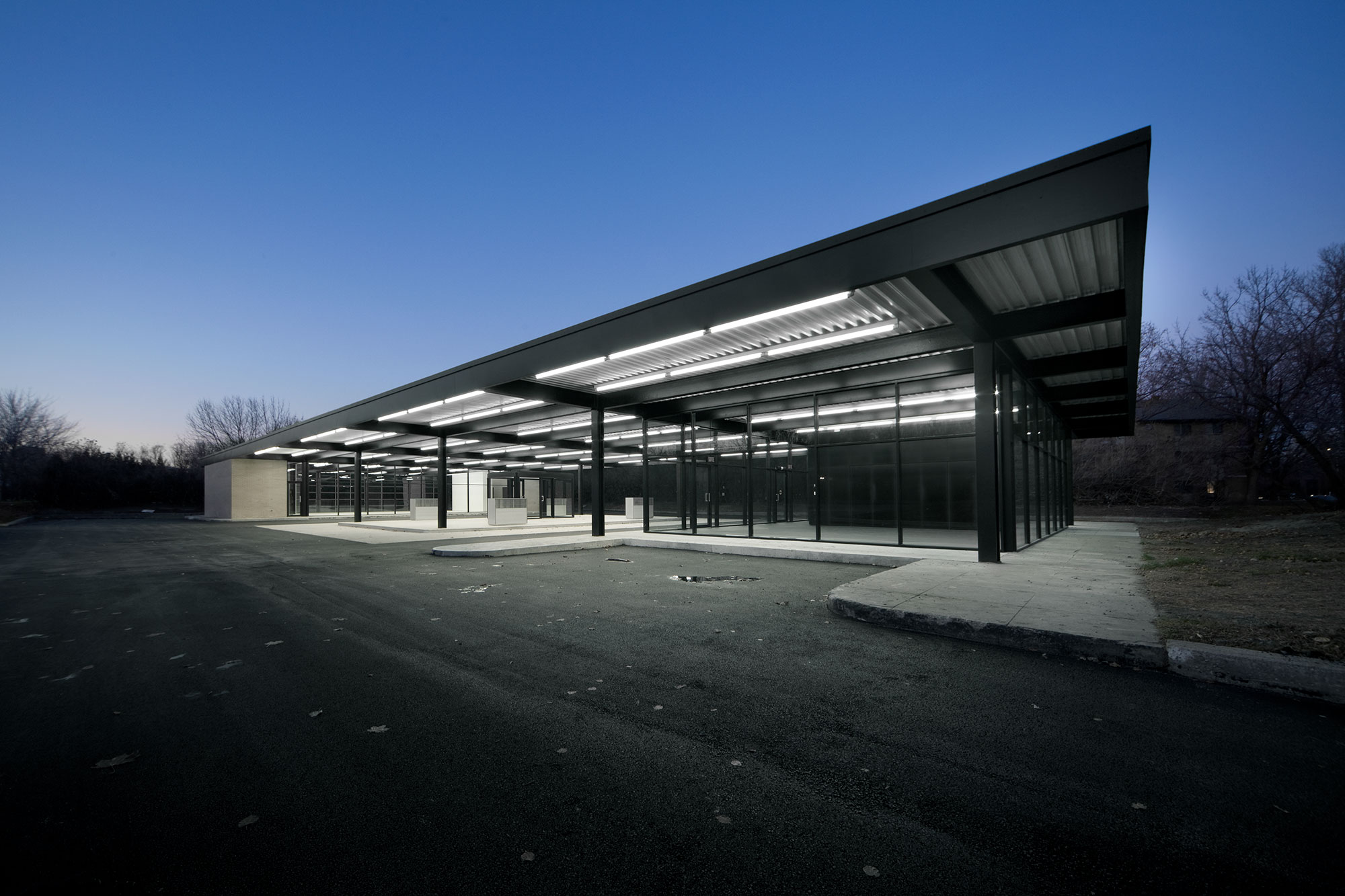
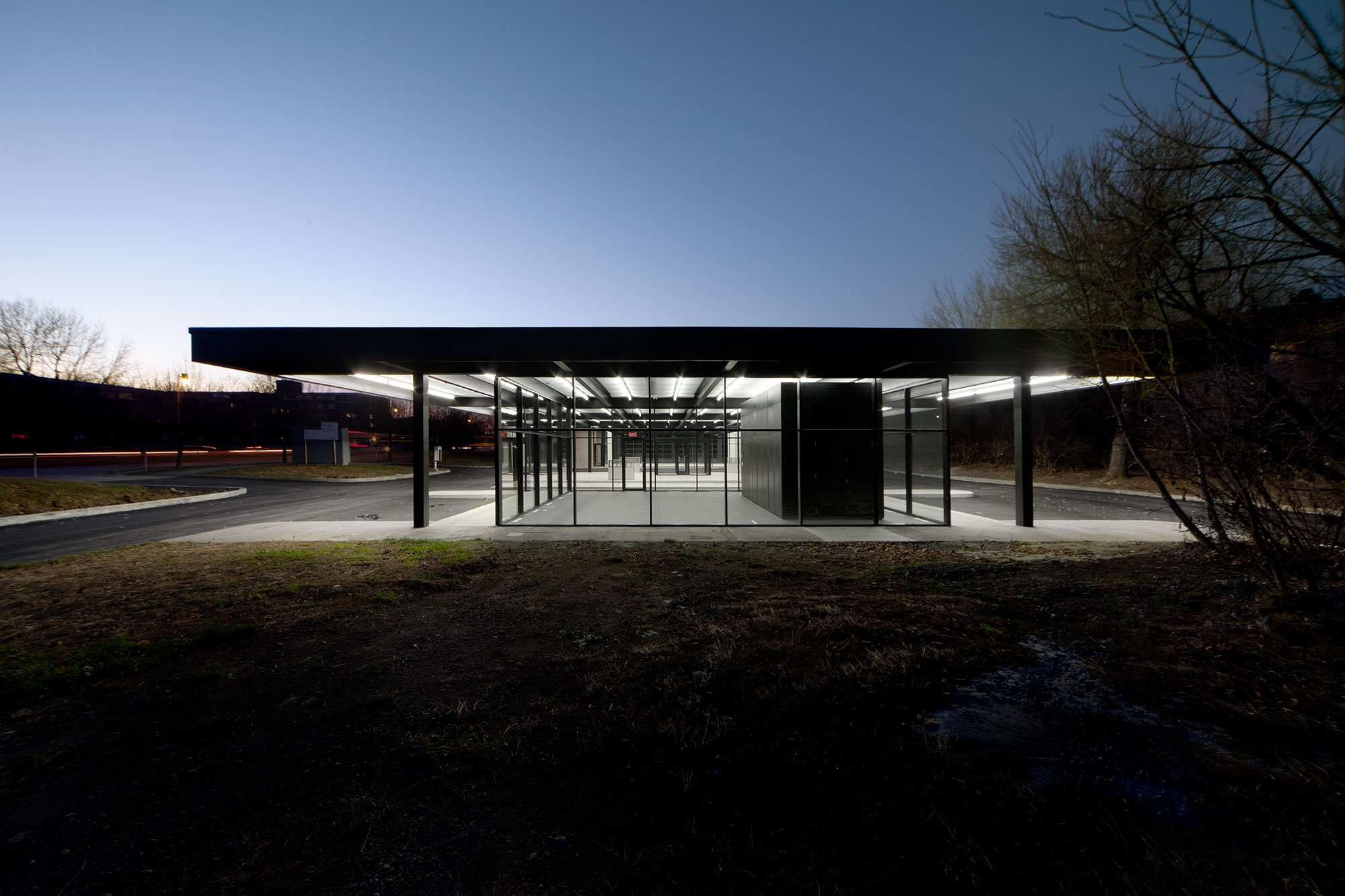

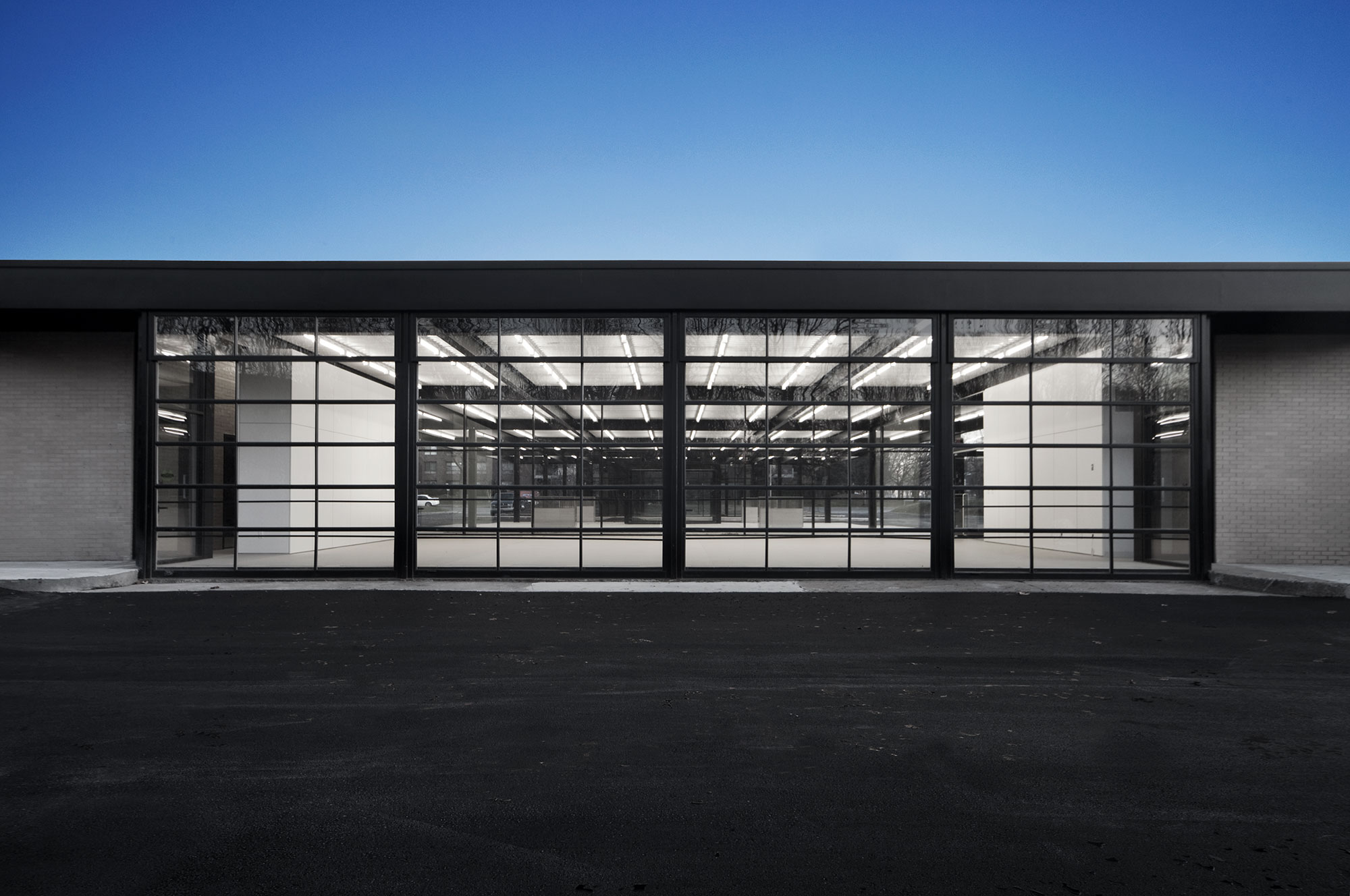
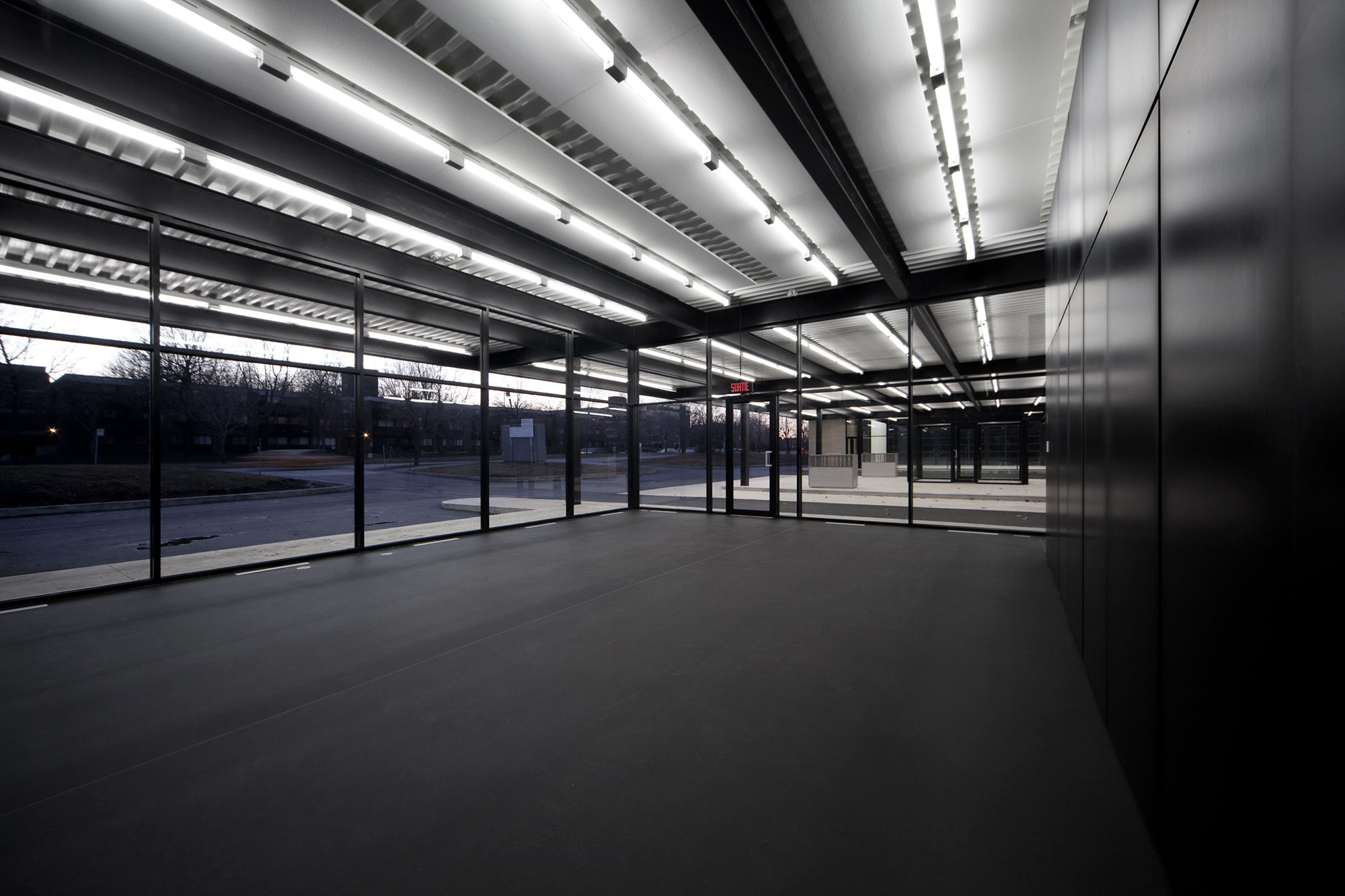




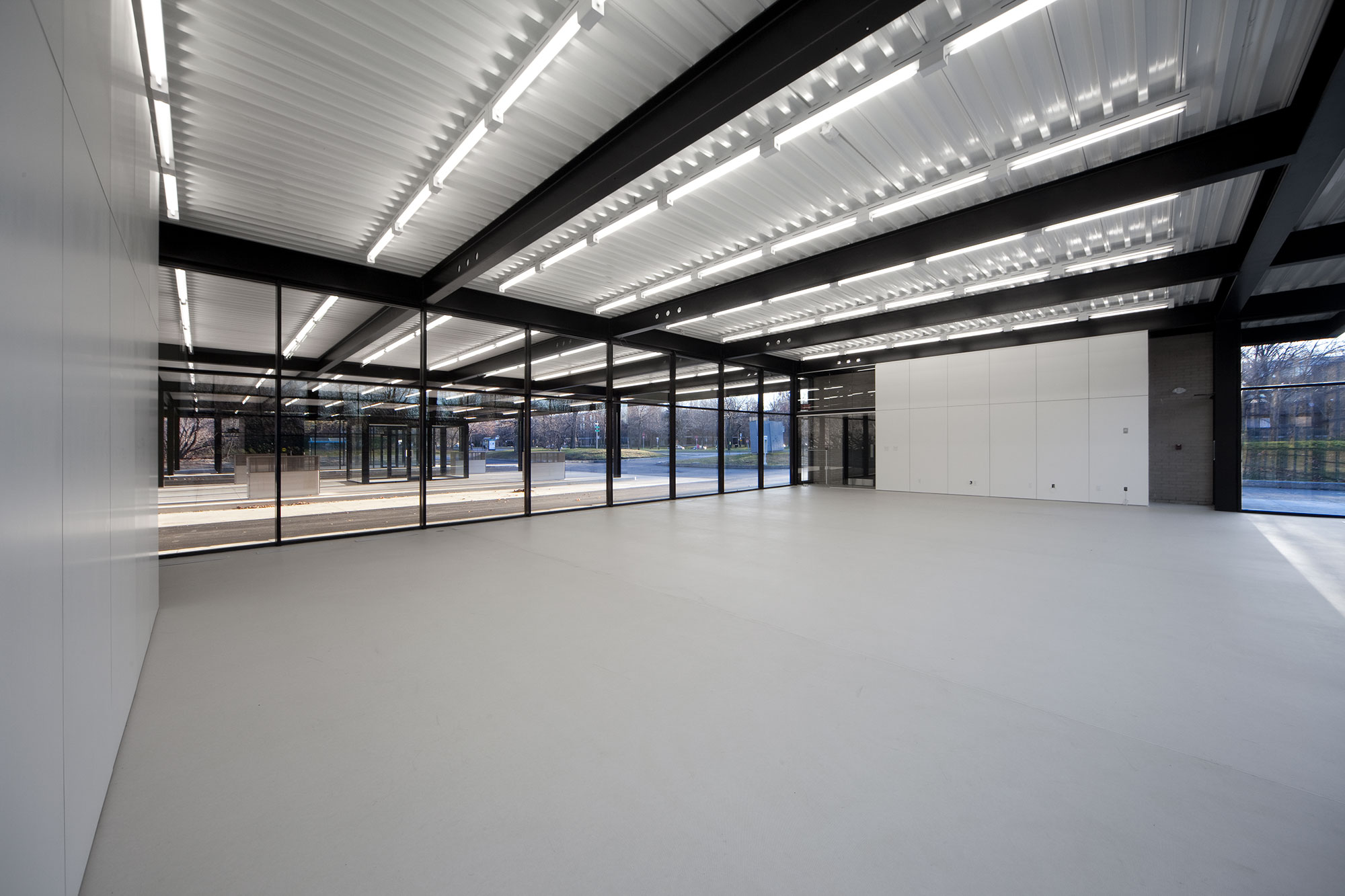
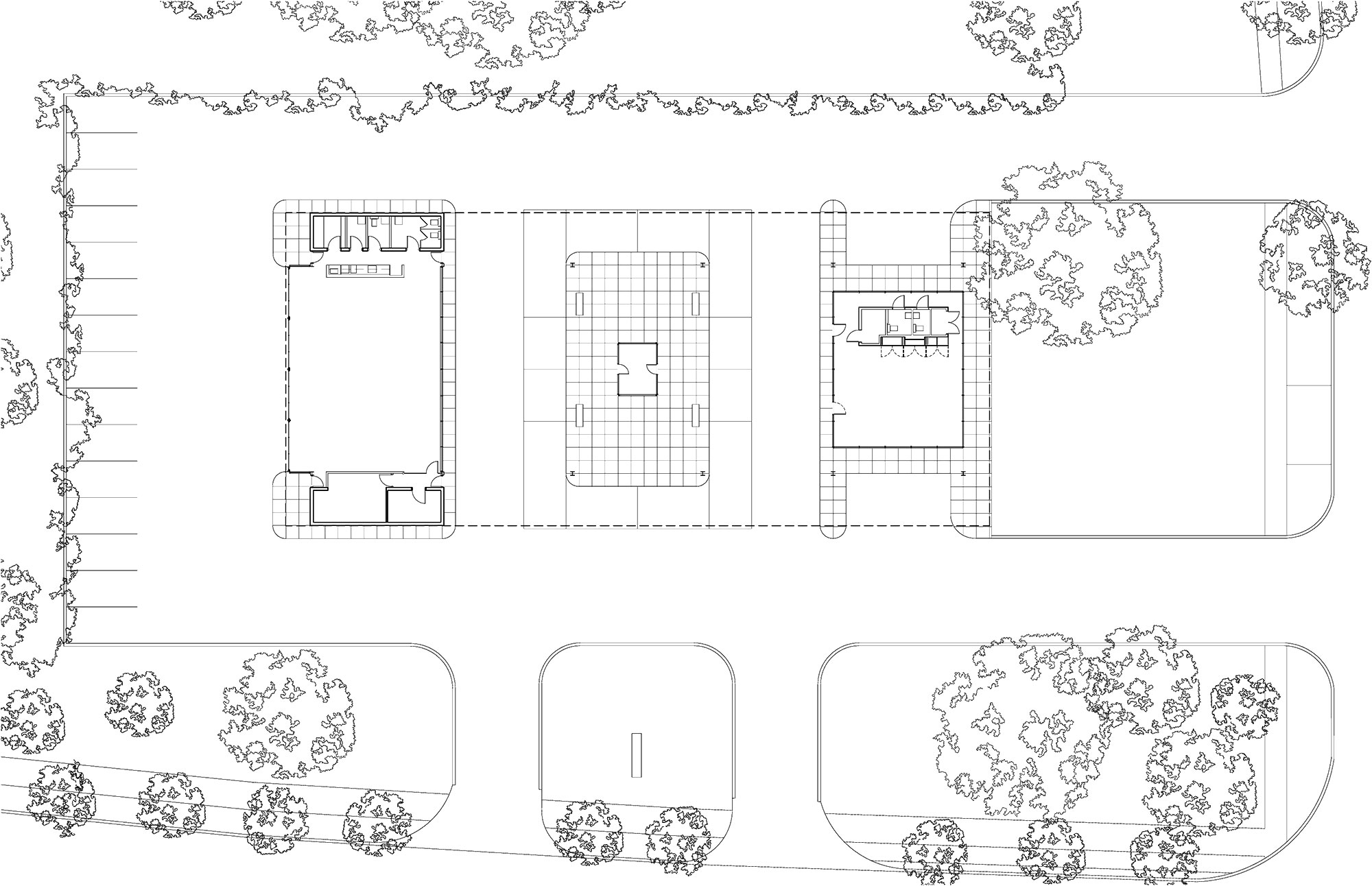

About FABG Architects
FABG is an Architecture studio based in Montréal, Canada. The studio has collaborated over the last 50 years to the success of numerous significant projects in several fields of architectural practice.
Éric Gauthier, the head designer, has played a significant role in renewing Québec’s cultural buildings leading a dozen theater and performance center projects. He also collaborated with Cirque du Soleil on the development of their headquarters and production center in Montréal.
About Mies Van Der Rohe
Ludwig Mies van der Rohe (1886 – 1969) was a German-American architect. He was commonly referred to as Mies, his surname. Along with Alvar Aalto, Le Corbusier, Walter Gropius, and Frank Lloyd Wright, he is regarded as one of the pioneers of modernist architecture.
Some of Ludwig Mies van der Rohe’s most famous projects included the Farnsworth House, the Crown Hall, the Seagram Building, and the German Pavilion (also known as the Barcelona Pavilion). For the German Pavilion, he designed a set of cantilevered steel chairs known as Barcelona chairs, which became an instant classic of 20th-century furniture design.
- Source: Interview of Eric Gauthier for Bloomberg
- Renovation Design Team: Eric Gauthier (Project Leader), Marc Paradis, Dominique Potvin, Jaime Lopez, Steve Montpetit, Aecom

